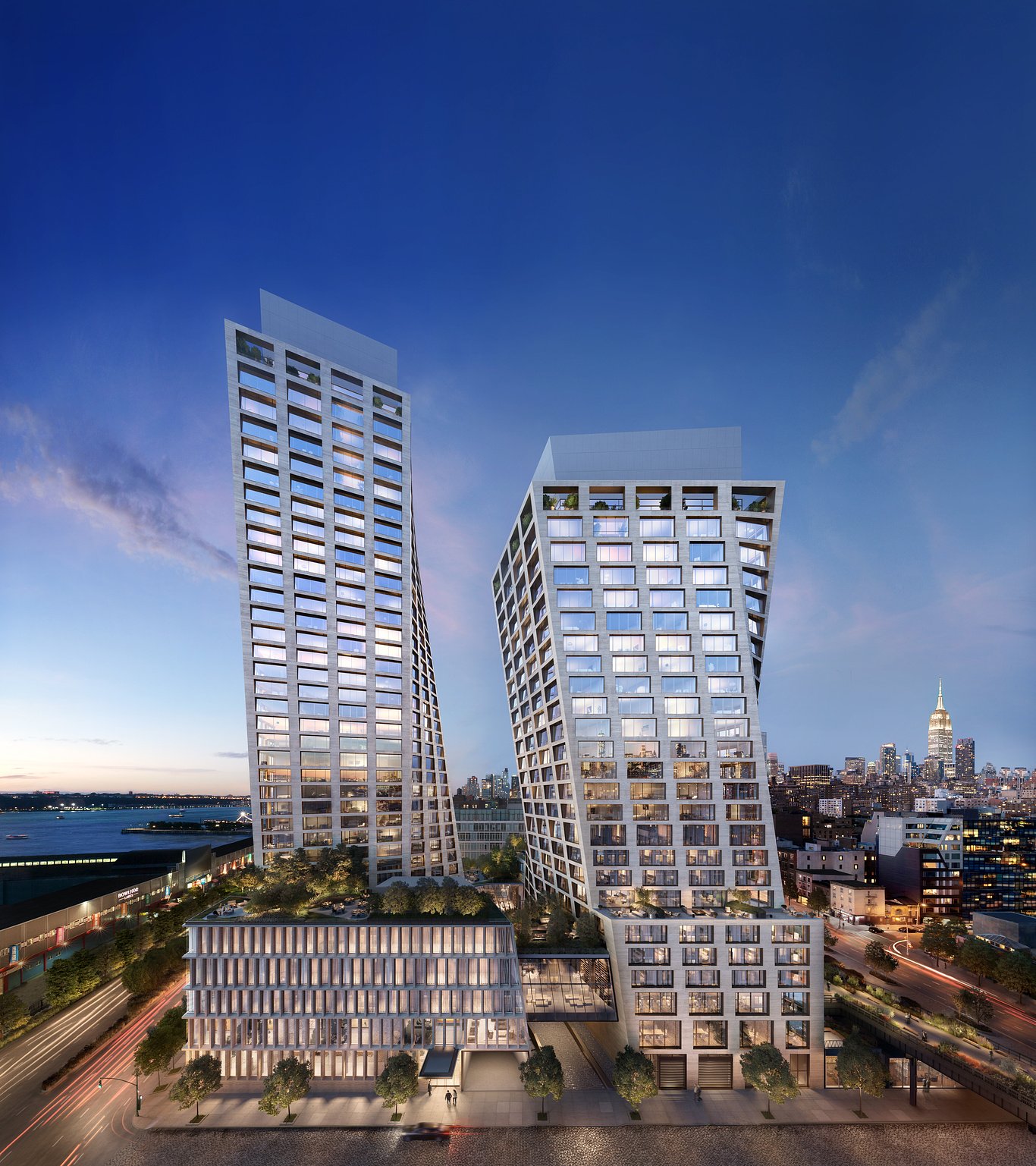THE XI
纽约,美国
83,000 平方米
混合功能
2020 年
十一号大楼位于高线沿线,毗邻弗兰克·盖里、让·努维尔和坂茂等人的一组建筑。两座塔楼从密集的城市环境中升起,可以在各个方向找到一览无余的视野。相应的设计是从上到下合并的两种不同的配置:一种在底部,与河流的开阔视野成比例,另一种在顶部重新定向,以提供横跨高线的视野。这两种配置在从地面上升到天空时相互连接,从一种布局转变为另一种布局。每座塔楼的倾斜立面打开,让光线和空气进入庭院的袖珍公园。立面是结构网格的公然表达,跟随塔几何的移动。雕塑形式是对遗址历史工业遗产和当代建筑的直接回应。它是手段,而不是目的。由此产生的建筑将切尔西的过去和现在融合成一个新的混合身份。
版权声明:未经授权,不得转发。
所属专题
-
现代主义痴迷于以白板为出发点。干净的石板。从头开始。与之相反,我们有语境主义,由坚定的信念驱动,即语境决定了我们建造的内容和方式。本质上,未来应该由过去决定。前者涉及对历史的近乎灾难性的抹杀;后者将未来限制在过去的狭隘范围内。建筑必须始终响应现有条件——文化、气候、景观、城市。响应式架构对周围环境的响应就像对对话中问题的回答一样。与其模仿已经存在的东西但对其做出响应,我们可以提升上下文,同时继承我们在空白画布上探索困难和不必要的形式。
响应式建筑曲折应对三维城市环境的复杂性。它捕捉了天然沙丘中的瞬态沙地层。它将阳台变成了反映巴哈马水景的人类水族馆。它融化成岩层。它对盛行风和太阳弧做出反应。通过对气候条件、阳光和热流等其他不可见的环境做出响应,响应式建筑可以将性能转化为形式。波纹外墙最大限度地减少了热暴露和眩光。有机条纹的参数图案弯曲并转动以对抗传入的阳光。由于忽视了我们的环境和气候,我们错过了建筑对话的机会。通过回应它,我们通过使自然力量对人眼可见,将自然转化为文化。未来不是在一个抽象的实验室中找到的,而是在实际条件的具体条件中。明天的城市已经到来——我们所要做的就是负责任地回应,以便继续面向未来的建筑对话。
Modernism was obsessed with the tabula rasa as the point of departure. The clean slate. Starting from scratch. As its opposite we have contextualism, driven by the firm belief that the context dictates what and how we build. Essentially that the future should be dictated by the past. The former involves an almost catastrophic erasure of history; the latter confines the future to a straitiacket of the past. Architecture must always respond to existing conditions-the culture, the climate, the landscape, the city. Responsive architecture responds to its surroundings like an answer to a question in a conversation. Rather than mimicking what is already there but responding to it, we can elevate the context while inheriting forms that would be difficult and unnecessary for us to explore on a blank canvas.
Responsive architecture twists and turns in answer to the complexity of a three-dimensional urban context. It captures the transient sand formations in natural dunes. It turns balconies into human aquariums mirroring the Bahamian waterscape. It melts into rock formations. It reacts to the prevailing winds and the arc of the sun. By responding to climatic conditions, the otherwise invisible context of sunrays and thermal flows, responsive architecture can turn performance into form. Rippled façades minimize thermal exposure and glare. Parametric patterns of organic striations bend and turn to counter the incoming sunrays. By ignoring our context and climate, we miss the opportunity for architectural dialogue. By responding to it we turn nature into culture by making the natural forces visible to the human eye. The future is not found in an abstract laboratory, but right here in the concrete conditions of the actual conditions. The citv of tomorrow is alreadv here-all we have to do is respond responsibly in order to continue the architectural conversation toward the future.










